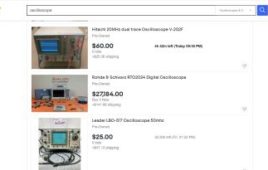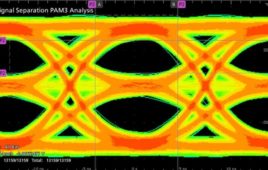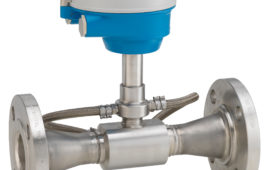Whether in manufacturing, education and R&D, the oscilloscope is the preferred tool for troubleshooting and debugging.
In R&D, oscilloscopes are used to troubleshoot, debug and characterize designs from prototype via the initial production run. Aside from accurate waveform capture, designers at R&D also need advanced analysis features to quickly determine the root cause of problems and reduce time to market.
Meanwhile, oscilloscopes provide technicians and production engineers in the manufacturing sector with repeatable pass/fail debug and measurements of products that do not pass. They also require fast test and easy operation as well as waveform analysis to identify problems.
Educators, on the other hand, utilize oscilloscopes to teach scientific measurements and basic electronic principles, while students need a device that are easy to use.
With this in mind, oscilloscope manufacturers have continuously worked to provide users with various features that can help them save time.
As an example, most oscilloscopes nowadays come with an integrated function generator. Combining these two important instruments in a single device effectively saves users with precious bench space, especially when they are working in an environment where space is a premium.
Another time saving feature is the segmented memory. This feature allows users to digitize only information of interest, effectively using less memory while capturing at a higher sample rate and longer period of time. Segmented memory is ideally suited for capturing signals with periods of burst data in between long spans of idle time, such as serial packets/frames and radar bursts.
Mask testing is one of the valuable applications integrated to an oscilloscope in addition to its traditional functions. Enabling users to easily capture a “golden” waveform, mask testing defines tolerance limits to form a test envelope. With incoming signals compared to the allowable tolerance limit and flagged as either pass or fail, users can then choose the preferred action that the oscilloscope will perform once it identifies a violation of the mask.
In addition, the oscilloscope’s Fast Fourier Transform (FFT) function allows users to easily view the frequency content of the signal under test. Aside from saving time, this function is also very useful in determining the main cause of noise within a waveform, like harmonic distortion or fine-tuning a filter.
Aware of the changing needs of the project, today’s designers usually prefers an oscilloscope that can easily be upgraded. This enables them to save not only time but costs as well.
Other time saving features of oscilloscopes include high-resolution mode and averaging mode, noise reject mode and high-frequency mode.
High-resolution mode and averaging mode allows users to effectively raise the resolution of oscilloscopes by up to 12 bits, reducing noise while producing a smoother image on the screen. Adding hysteresis to the trigger circuit, noise reject makes the trigger circuit less sensitive to noise although it may need more amplitude waveform to properly trigger. High-frequency reject, on the other hand, provides the trigger path with a 50 kHz low-pass filter to remove unwanted noise like FM or AM broadcast signals.
Filed Under: Test & Measurement Tips




